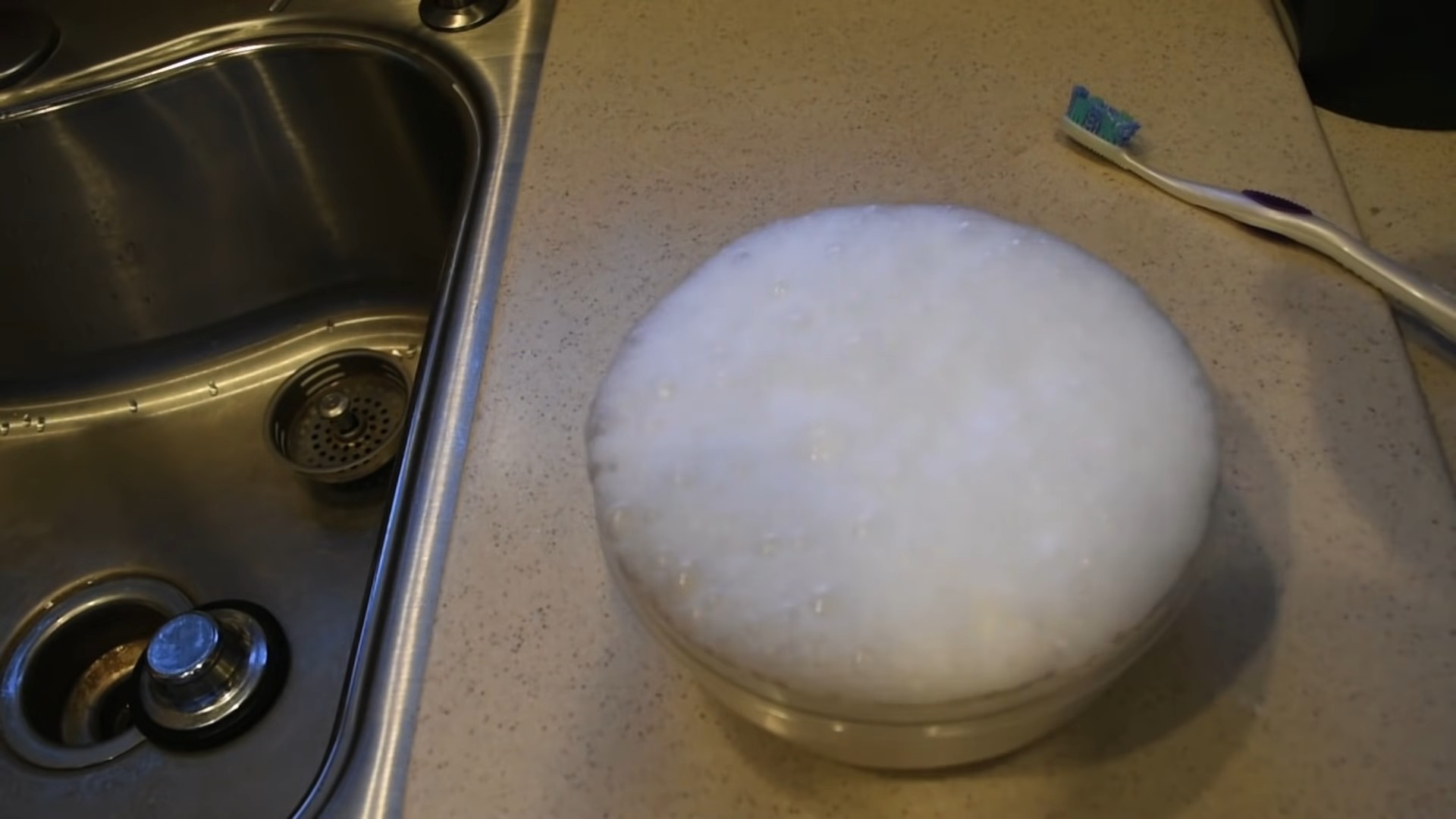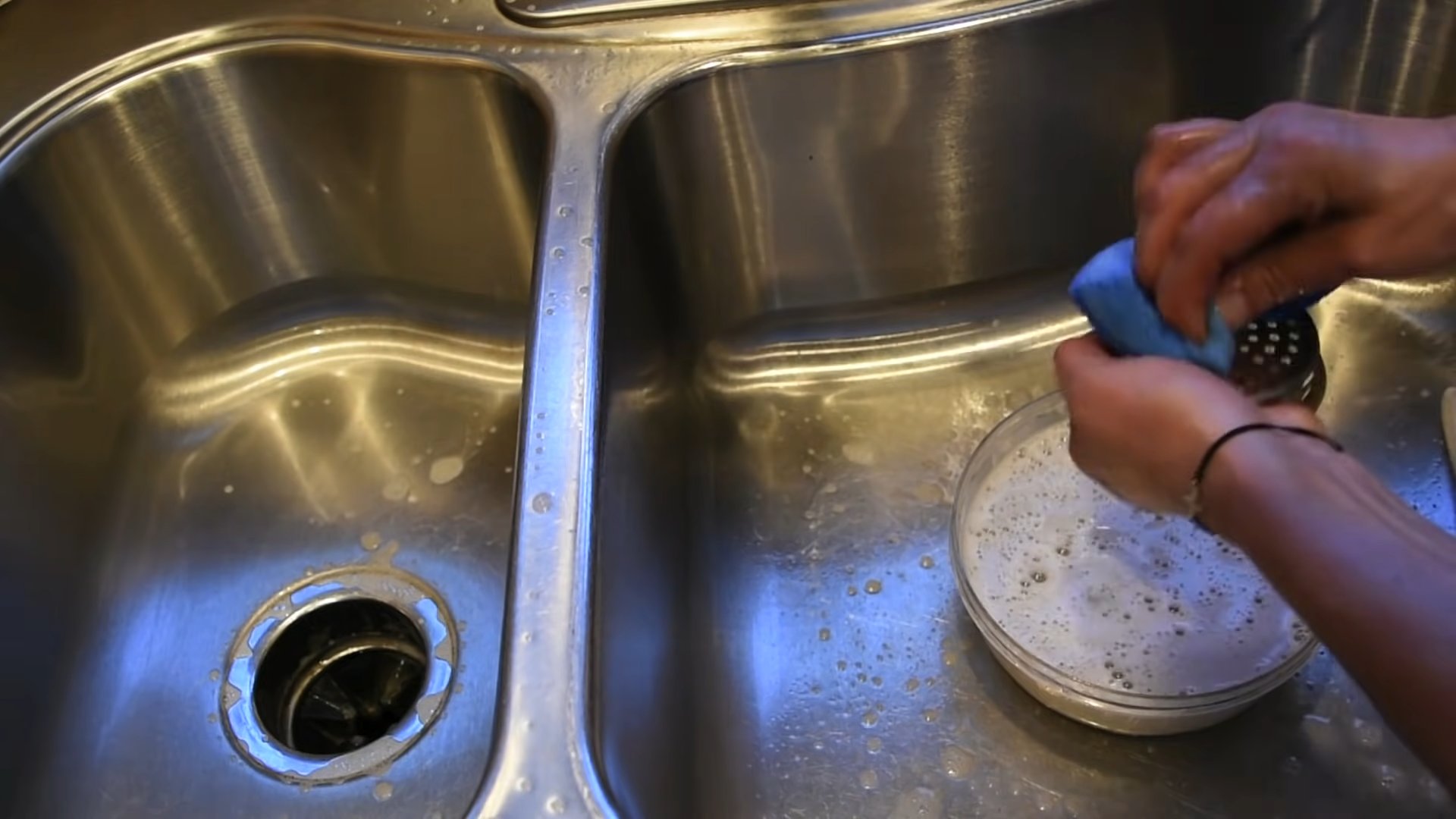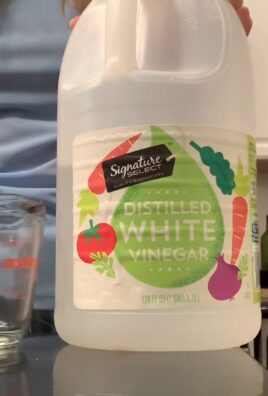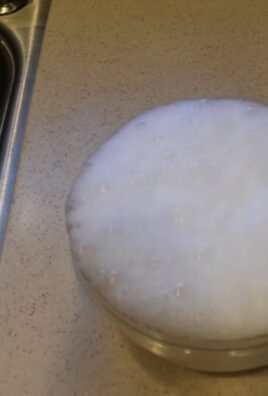Clean Kitchen Sink: DIY Tricks for a Sparkling Sink
I love a sparkling clean kitchen sink! There’s something incredibly satisfying about a gleaming, spotless sink, isn’t there? It instantly brightens the whole kitchen and makes meal prep feel so much more enjoyable. That’s why I’m so excited to share some of my favorite Clean Kitchen Sink DIY tricks and hacks with you today. This isn’t just about aesthetics; a clean sink is crucial for maintaining a hygienic kitchen environment, preventing the spread of germs, and making your cleaning routine much easier.
The quest for a sparkling clean kitchen sink is as old as kitchens themselves! Throughout history, people have used various ingenious methods to clean their sinks, from simple scrubbing with natural materials to more advanced cleaning solutions. But even with modern cleaning products, achieving that truly pristine shine can sometimes feel like a battle. That’s where these Clean Kitchen Sink DIY solutions come in handy.
Why You Need These DIY Tricks
Let’s face it, commercial cleaners can be harsh, expensive, and sometimes even ineffective against stubborn stains and grime. These DIY methods offer a gentler, more eco-friendly, and often more cost-effective way to achieve a sparkling clean kitchen sink. Whether you’re dealing with hard water stains, lingering food residue, or just general grime, these simple tricks will help you conquer even the toughest cleaning challenges. You’ll be amazed at the difference!
So, grab your cleaning supplies, and let’s dive into these fantastic DIY solutions for a brilliantly Clean Kitchen Sink that will leave you feeling proud and your kitchen sparkling!

Building a Custom Bookshelf from Reclaimed Wood
I love the look of reclaimed wood, and I’ve always wanted a unique bookshelf. So, I decided to build my own! This project took a bit of time, but the result is a beautiful, one-of-a-kind piece I’m incredibly proud of. Here’s how I did it:
Gathering Your Materials
- Reclaimed wood planks (I used about 10-12, varying lengths and widths, but aim for a consistent thickness). Make sure the wood is clean and dry.
- Wood glue
- Wood screws (various lengths depending on plank thickness)
- Drill with drill bits (appropriate sizes for your screws)
- Level
- Measuring tape
- Pencil
- Safety glasses
- Sandpaper (various grits, starting with coarser and ending with finer)
- Wood stain (optional, but highly recommended for a richer look and protection)
- Wood sealant (optional, but recommended for durability)
- Clamps (helpful for holding pieces together while the glue dries)
- Safety gloves
Preparing the Wood
1. Clean the wood: Before you start, give your reclaimed wood planks a thorough cleaning. I used a stiff brush and a damp cloth to remove any dirt, debris, or loose bits of bark. Let them dry completely.
2. Assess and Plan: Lay out your planks to visualize your bookshelf design. Consider the height, width, and overall shape you want to achieve. Remember, reclaimed wood often has imperfections, which adds to its charm, but you’ll want to plan around any significant cracks or damage. I sketched out a rough plan before I started assembling.
3. Cut and Sand: If needed, cut your planks to the desired lengths using a saw (a circular saw or miter saw works best). Always wear safety glasses when using power tools. Once cut, sand all the planks thoroughly. Start with a coarser grit sandpaper to remove any rough edges or splinters, then gradually move to finer grits for a smooth finish. This step is crucial for a professional-looking final product. I spent a good amount of time sanding to get the finish just right.
Assembling the Bookshelf
1. Apply Glue and Secure: I decided on a staggered shelf design. Start by applying wood glue to the ends of two planks that will form the sides of your bookshelf. Carefully align them, ensuring they are level and plumb. Clamp them together firmly and let the glue set according to the manufacturer’s instructions (usually around 30-60 minutes).
2. Attaching Shelves: Once the side pieces are securely glued and clamped, it’s time to add the shelves. I measured and marked the positions for each shelf on the side pieces. Apply wood glue to the ends of the shelf planks and position them between the side pieces at your marked locations. Pre-drill pilot holes to prevent the wood from splitting when you screw them in. Use screws of appropriate length to secure the shelves to the sides. Again, use clamps to hold everything in place while the glue dries. Take your time with this step; accuracy is key.
3. Repeat for Remaining Shelves: Repeat step 2 for each shelf you want to add. Remember to check for levelness and alignment frequently. I found it helpful to use a level after each shelf was attached to ensure everything remained straight.
4. Reinforce (Optional): For added stability, especially if you plan on loading your bookshelf heavily, consider adding support pieces to the back. These can be smaller pieces of wood screwed into the back of the shelves and side pieces.
Finishing Touches
1. Sanding (Again!): After the glue has completely dried and all the shelves are securely attached, give your bookshelf another light sanding. This will smooth out any rough edges or imperfections created during assembly.
2. Stain and Seal (Optional): I chose a dark walnut stain to enhance the natural beauty of the reclaimed wood. Apply the stain according to the manufacturer’s instructions, allowing ample drying time between coats. Once the stain is dry, apply a wood sealant to protect your bookshelf from moisture and damage. This will also help to enhance the color and durability of the stain.
3. Clean Up: Once the sealant is dry, clean up any excess stain or sealant with a clean cloth. Admire your handiwork!
Troubleshooting
Uneven Shelves:
If your shelves are uneven, carefully remove the screws, re-apply glue, and re-attach the shelves, ensuring they are level before securing them with screws.
Cracked Wood:
Reclaimed wood often has cracks. If a crack is significant, you might need to reinforce it with wood glue and small wood pieces before attaching the shelf.
Loose Screws:
If any screws become loose over time, simply tighten them with a screwdriver.
Building this bookshelf was a rewarding experience. It allowed me to express my creativity and create a truly unique piece for my home. Remember to always prioritize safety and take your time. The result will be worth the effort!

Conclusion
So there you have it! Our guide to achieving a sparkling clean kitchen sink, a task often overlooked but undeniably crucial for maintaining a hygienic and aesthetically pleasing kitchen. This DIY cleaning method isn’t just about achieving a gleaming surface; it’s about reclaiming control over a frequently used area of your home and preventing the build-up of grime and bacteria. This simple Clean Kitchen Sink method is a must-try because it’s effective, affordable, and requires minimal effort. You’ll be amazed at the difference a little elbow grease and the right techniques can make. The satisfying shine and the knowledge that your sink is truly sanitized are rewards in themselves. Forget harsh chemicals and expensive cleaners; this natural approach is gentle on your sink, your hands, and the environment.
Beyond the basic method outlined, there are numerous ways to personalize your Clean Kitchen Sink routine. For those with particularly stubborn stains, consider a pre-soak with baking soda and white vinegar before scrubbing. Let the mixture sit for 15-20 minutes to allow it to work its magic on those ingrained marks. For a deeper clean, you can also use a soft-bristled brush or a specialized sink cleaning tool to reach those hard-to-reach corners and crevices. If you prefer a more fragrant experience, add a few drops of your favorite essential oil, like lemon or tea tree, to your cleaning solution. This will leave your sink smelling fresh and clean. Experiment with different combinations of natural ingredients to find what works best for you and your sink’s material. Remember to always test any new cleaning solution on a small, inconspicuous area first to ensure it doesn’t damage the finish.
Ultimately, the success of this Clean Kitchen Sink method lies in consistency. Regular cleaning, even if it’s just a quick wipe-down after each use, will prevent grime from accumulating and make future deep cleans much easier. By incorporating this simple routine into your daily or weekly cleaning schedule, you’ll not only maintain a sparkling clean sink but also contribute to a healthier and more pleasant kitchen environment. We strongly encourage you to try this DIY method and experience the transformative power of a truly clean kitchen sink. Share your results with us! Let us know your favorite variations and tips in the comments below. We’d love to hear about your Clean Kitchen Sink success stories and learn from your experiences. Let’s make sparkling sinks the new standard!
Frequently Asked Questions
What if my sink is made of stainless steel?
Stainless steel sinks are generally very durable and can withstand most cleaning methods. The DIY Clean Kitchen Sink method described is perfectly safe for stainless steel. However, always avoid using abrasive cleaners or scouring pads, as these can scratch the surface. A soft cloth or sponge is recommended for scrubbing. After cleaning, dry the sink thoroughly to prevent water spots.
What about porcelain or enamel sinks?
Porcelain and enamel sinks are also compatible with this Clean Kitchen Sink method. However, be extra gentle when scrubbing to avoid scratching the delicate surface. Avoid using harsh chemicals or abrasive cleaners, as these can damage the finish. A soft cloth or sponge is recommended. Regular cleaning will help maintain the shine and prevent staining.
Can I use this method on a composite sink?
Composite sinks, such as those made from granite or quartz, are generally quite durable. The DIY Clean Kitchen Sink method is usually suitable, but always check the manufacturer’s recommendations for cleaning your specific sink material. Avoid abrasive cleaners and scouring pads, and use a soft cloth or sponge for scrubbing. Always test any new cleaning solution on a small, inconspicuous area first.
How often should I clean my kitchen sink using this method?
The frequency of cleaning depends on your usage. For most households, a quick wipe-down after each use is sufficient to prevent grime buildup. A more thorough Clean Kitchen Sink cleaning, using the method described, should be performed at least once a week, or more frequently if needed. Regular cleaning will prevent stubborn stains and keep your sink sparkling.
What if I have stubborn stains that won’t come off?
For stubborn stains, try pre-soaking the sink with a paste of baking soda and white vinegar before scrubbing. Let the mixture sit for 15-20 minutes to allow it to loosen the stains. You can also try using a soft-bristled brush or a specialized sink cleaning tool to reach those hard-to-reach areas. If the stains persist, consider using a commercial sink cleaner specifically designed for your sink material, but always follow the manufacturer’s instructions.
Are there any safety precautions I should take?
Always wear rubber gloves when cleaning your sink, especially when using cleaning solutions. This will protect your hands from harsh chemicals and prevent skin irritation. Ensure proper ventilation in your kitchen while cleaning. Never mix different cleaning products, as this can create dangerous fumes. Always store cleaning supplies out of reach of children and pets.
What if my sink still looks dull after cleaning?
If your sink still looks dull after cleaning, it might be due to mineral deposits or hard water stains. You can try using a commercial descaler or a solution of white vinegar and water to remove these deposits. Always follow the manufacturer’s instructions and test any new solution on a small, inconspicuous area first. Regular cleaning and drying will help prevent future dullness.




Leave a Comment